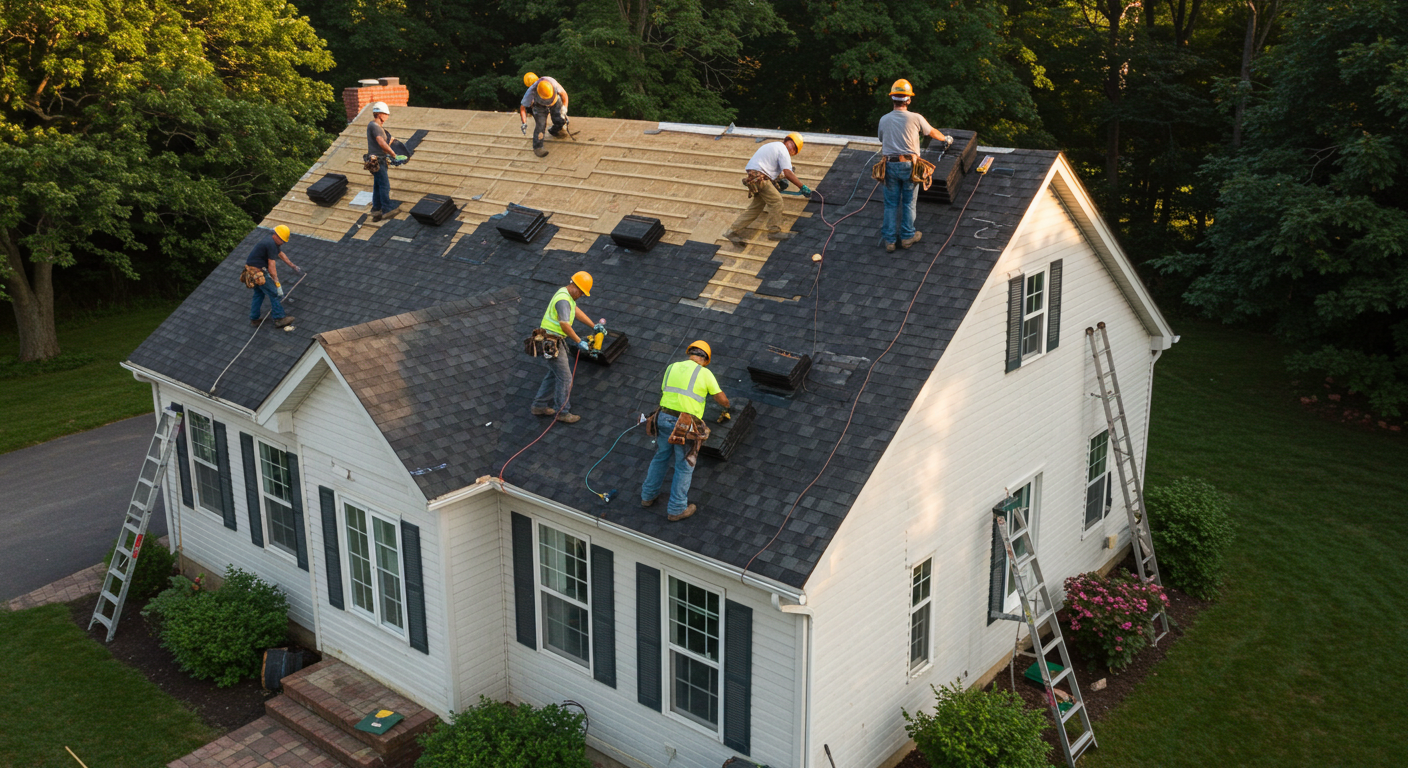The journey of installing a new roof can be overwhelming for any homeowner, but understanding the process is key to a successful outcome. Whether you’re facing old age, leaks, or wind damage, installing a new roof can significantly enhance your home’s integrity and value. As we navigate this essential guide, expect insights from start to finish.
The Necessity of a New Roof Installation
When contemplating a new roof installation, the first step is recognizing when it’s necessary. Several signs could signal this:
- Noticeable leaks or water stains on your ceilings or walls indicate underlying roof issues.
- While they may seem harmless, pervasive moss or algae can deteriorate your roofing materials over time.
- An aging roof may fail to insulate your home adequately, leading to higher heating and cooling costs.
- Inspect the metal flashings around chimneys and vents. If they’re corroded, replacing your roof is likely necessary.
Choosing the Right Materials for Your New Roof
Numerous options are available, each with unique characteristics to suit various needs.
Asphalt Shingles
Asphalt shingles remain the most popular and cost-effective choice for residential roofing. Their affordability, combined with the availability of numerous colors and styles, makes them appealing for many homeowners.
Metal Roofing
Increasingly favored for its energy efficiency, metal roofing is a sustainable option that can withstand extreme weather conditions. This roofing type is available in various styles, from classic standing seam to corrugated panels, and can significantly reduce cooling expenses.
Tile Roofing
If aesthetics are a priority, tile roofing, whether clay or concrete, provides a timeless elegance. Not only are they visually striking, but their durability ensures they can withstand harsh weather, making them a favored choice in regions susceptible to storms.
Slate Roofing
Slate offers unmatched luxury with its sophisticated finish and incredible durability. Although its upfront cost is higher, slate’s longevity makes it a worthwhile investment for those looking for a roof that can last over a century.
The Roof Installation Process
Once the materials are chosen and ordered, it’s time to delve into the installation process. Understanding what to expect can ease anxieties associated with having construction professionals working on your home.
Initial Inspection and Preparation
Before any actual work begins, a thorough inspection of the existing roof will be executed. This inspection helps determine the condition of the roof decking and any necessary repairs that must be made before installing new materials. The contractor will evaluate:
- Signs of moisture damage on the decking underneath.
- The overall structural integrity of the original roof.
- Any underlying issues that could complicate the installation.
Demolition of the Old Roof
If you’re replacing an existing roof, the next phase entails stripping the old materials. This step is critical for assessing the roof deck’s quality. Crews will remove old shingles, tiles, or metal, disposing of them responsibly.
Installation of New Underlayment and Flashing
Once the deck is exposed, the contractor will lay down a waterproof underlayment, providing an extra layer of protection. Flashings will then be installed around key areas such as chimneys and vents to prevent water accumulation.
Laying New Roofing Material
Finally, it’s the moment of truth—the installation of the new roofing material begins! Whether opting for asphalt shingles or metal panels, the crew will work systematically, ensuring everything fits perfectly and functions to specifications. Note that they will begin at the house’s edge, overlapping the material for optimal water resistance.
Throughout this stage, contractors are meticulous, ensuring that each piece is installed correctly to uphold the warranty and prevent future issues.
Post-Installation: Maintenance and Care
Once your new roof is installed, it’s crucial to adopt a routine maintenance practice to extend its lifespan. Here’s what you should keep in mind:
- Schedule annual roof inspections to catch any developing problems early. After severe weather, inspect for visible damage immediately.
- Ensure your gutters and downspouts remain clear of debris to avoid water pooling, which can lead to leaks.
- Trim trees nearby to prevent branches from falling and causing damage during storms.
- Check attic ventilation periodically to avoid moisture build-up that can degrade roofing materials.
Take the time to gather multiple quotes from different contractors to compare costs and offerings. It’s important to ask about warranties provided by manufacturers, offering assurance on product longevity.
